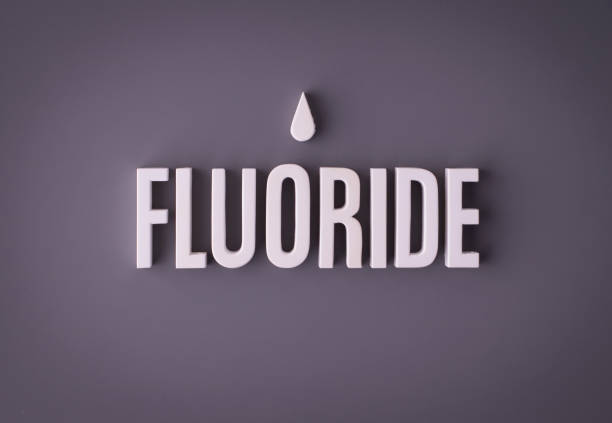Fluoride

Too much Fluoride can cause fluorosis. Safe Home has several kits that provide drinking water testing for fluoride in city water or well water supplies.
Parameter Type: Drinking Water Testing for Volatiles
Parameter Name: Fluoride
What it is and Where it Comes From:
Fluoride is a naturally-occurring mineral which is found in all-natural waters to some extent – both seawater and fresh water. It is the 13th most abundant element on the Earth’s crust, a chemical Ion of Fluorine. Fluorine is the gaseous form, Fluorite the crystal form. Both contain Fluoride. Ionic minerals are more easily absorbed by the body than are Colloidal minerals, which stay in suspension in larger ‘clumps. Fluoride exists in many water supplies, and it is added to drinking water in many countries. As of 1951 the U.S. Public Health Service issued a policy called water fluoridation. Water fluoridation is the controlled adjustment of fluoride to a public water supply solely to reduce tooth decay (most widely considered effective for children under the age of 16). Fluoridated water contains fluoride at a level that is effective for preventing cavities; this can occur naturally or by adding fluoride. The U.S. Environmental Protection Agency (EPA) published a maximum contaminant level (MCL) standard of 4.0 mg/l for fluoride, applicable to public water systems. The standard was promulgated pursuant to the Safe Drinking Water Act (SDWA). The SDWA allows states to set more stringent standards, and several states have done so, including New York (state), where the fluoride MCL is 2.2 mg/l. Drinking water testing is the most effective way to check for safe water in your home. Safe Home offers Laboratory drinking water testing kits for fluoride, allowing you to collect your water sample and ship it directly to our EPA-Certified Laboratory. This platform of drinking water testing for fluoride will give you an accurate level based on the lowest level of a parameter our instruments can detect (Method Detection Level). Safe Home drinking water testing for inorganics can be used for city and well water supplies. Drinking water testing should be done any time you notice a significant change in your water quality.
Health Effects:
Ingestion of excess fluoride, most commonly in drinking-water, can cause fluorosis which affects the teeth and bones. Moderate amounts lead to dental effects, but long-term ingestion of large amounts can lead to potentially severe skeletal problems. Paradoxically, low levels of fluoride intake help to prevent dental caries. The control of drinking-water quality is therefore critical in preventing fluorosis. The condition and its effect on people Fluorosis are caused by excessive intake of fluoride. The dental effects of fluorosis develop much earlier than the skeletal effects in people exposed to large amounts of fluoride. Clinical dental fluorosis is characterized by staining and pitting of the teeth. In more severe cases all the enamel may be damaged. However, fluoride may not be the only cause of dental enamel defects. Enamel opacities like dental fluorosis are associated with other conditions, such as malnutrition with deficiency of vitamins D and A or a low protein-energy diet. Ingestion of fluoride after six years of age will not cause dental fluorosis. Chronic high-level exposure to fluoride can lead to skeletal fluorosis. In skeletal fluorosis, fluoride accumulates in the bone progressively over many years. The early symptoms of skeletal fluorosis include stiffness and pain in the joints. In severe cases, the bone structure may change, and ligaments may calcify, with resulting impairment of muscles and pain. Acute high-level exposure to fluoride causes immediate effects of abdominal pain, excessive saliva, nausea, and vomiting. Seizures and muscle spasms may also occur. Excess amounts of fluoride can also cause Osteosarcoma. Osteosarcoma is a type of bone cancer that begins in the cells that form bones. Osteosarcoma is most often found in the long bones, more often the legs, but sometimes the arms, but it can start in any bone. In very rare instances, it occurs in soft tissue outside the bone.
Solutions to Contaminant Levels:
After drinking water testing, how can fluoride be reduced? Fluoride can be reduced from drinking water with a Reverse Osmosis System. Reverse osmosis is a process that removes foreign contaminants, solid substances, large molecules, and minerals from water by using pressure to push it through specialized membranes. Here’s how reverse osmosis works. Unlike osmosis, which is a passive process, reverse osmosis requires external force (pressure) to work. Pressure is applied to a highly concentrated solute solution, such as salt water, to pass through a membrane to a lower concentrate solution. The membrane allows water to flow through but blocks out larger molecules, like contaminants. The reverse osmosis process leaves higher concentrations of solute on one side and only the solvent, or freshwater, on the other. Reverse Osmosis (RO) system can remove 85-92% of fluoride in your water. Who do I need to contact to find out more information about water quality in my area? Every community water supplier must provide an annual report to its customers, known as a Consumer Confidence Report (CCR). The report provides information on your local drinking water quality, including the water’s source, contaminants found in the water, and how consumers can get involved in protecting drinking water. How often does the local public water system preform drinking water testing? Frequency of drinking water testing depends on the number of people served, the type of water source, and types of contaminants. Certain contaminants are tested more frequently than others, as established by the Safe Drinking Water Act. You can find out about levels of regulated co


